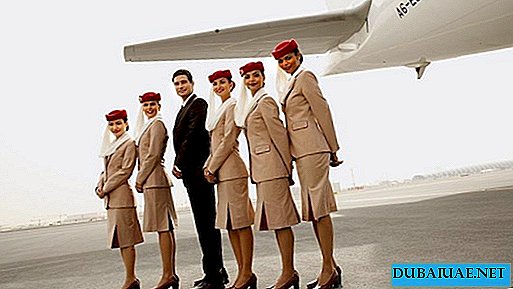 Text: Natalia Remmer
Text: Natalia Remmer THE FAMOUS FRENCH ARCHITECT Jean Nouvel is ONE OF THE METERS OF MODERN GLOBAL ARCHITECTURE AND A PARTICIPANT OF THE CONTEXTUAL APPROACH TO REALIZATION OF REALITY. THE OWNER OF ARCHITECTURAL NOBEL LEARNING IS ASSEMBLING A CULTURAL Jigsaw POSITION, PLACING STRONGLY IN OUR PLACES THE MISSING ELEMENTS OF A HISTORICAL AND GEOGRAPHIC CONTEXT.
If you do not delve into philosophy, we can say that Jean Nouvel is sensitive to the integration of architectural objects in the surrounding landscape. However, he considers it in a broader sense - cultural and civilizational. “Every time I try to find what I call the“ missing link in the puzzle, ”the right building in the right place,” says the charismatic architect. In his opinion, there are no empty places on the planet - each of them stores traces of history and civilization in itself and, therefore, carries the meanings given for a specific space and time, and the task of the master is only to correctly interpret them.
The venerable Jean Nouvel is a stiff European intellectual working in the genre of "critical architecture." His portfolio includes more than 200 projects (implemented and remaining on paper) on different continents: concert and exhibition centers, museum complexes, skyscrapers, offices and residential buildings.
Among the most spectacular works are the Cartier Foundation headquarters in Paris, the Lyon Opera House, the Lucerne Cultural Center and the Berlin Lafayette Gallery. However, the real glory to the charismatic Frenchman was brought precisely by projects related to the Arab world. Starting his victorious procession with the design of the super-technological duo of the Arab World Institute buildings on the Seine embankment in the early 80s, Jean Nouvel became one of the main tribunes of the architectural transformation of the Persian Gulf countries - primarily the deserted shores of Qatar and the United Arab Emirates.
Understand. Fit
The first significant victory of Jean Nouvel in the architectural field was the design of the Institute of the Arab World - the building on the Seine embankment was part of the plan for the renovation of Paris, proposed in 1981 by French President Francois Mitterrand. This grandiose project was the architect’s first appeal to the traditions of the Islamic world, dominated by geometric ornaments and the abstract play of light and shadow. Based on centuries-old traditions, the master created an innovative facade (2000 sq. M.) With 240 diaphragm panels in the spirit of the classic Arabic pattern “Mashrabiya”.
Each panel has a built-in photocell designed to measure the level of daylight - depending on its intensity, the diaphragms open and close, adjusting the level of illumination of the interior. The building of the institute has become one of the most expensive and significant architectural projects of recent times, and its author called his brainchild "a turning point between two cultures and two stories."
 The penetration of the genius of architectural thought on the shores of Arabia began with the project of the Sheikh Zayed Grand Mosque. According to the idea, the religious building, which has now become one of the main attractions of Abu Dhabi, should have looked very futuristic: hi-tech minarets were more like rockets at the start, and space itself was the launch pad of the cosmodrome. Unfortunately or fortunately, the project was not implemented. However, a few years later, Jean Nouvel returned to Abu Dhabi - this time with a project close to the Parisian’s heart in all respects — namely the Emirate’s branch of the Louvre, the opening of which promises to be the most significant cultural event of recent years in the entire Middle East.
The penetration of the genius of architectural thought on the shores of Arabia began with the project of the Sheikh Zayed Grand Mosque. According to the idea, the religious building, which has now become one of the main attractions of Abu Dhabi, should have looked very futuristic: hi-tech minarets were more like rockets at the start, and space itself was the launch pad of the cosmodrome. Unfortunately or fortunately, the project was not implemented. However, a few years later, Jean Nouvel returned to Abu Dhabi - this time with a project close to the Parisian’s heart in all respects — namely the Emirate’s branch of the Louvre, the opening of which promises to be the most significant cultural event of recent years in the entire Middle East.
The design of the Louvre Abu Dhabi is dominated by the element of water, without which it is impossible to imagine the civilization of the Arab world. The snow-white building represents the ship, peacefully sailing along the water surface and by no means striving to soar skyward. The main design feature is the delightful "lace" dome weighing 7 tons, the design of which gives rise to an intricate play of light and shadow. The opening of the cultural center is scheduled for 2016.
One of the first realized projects of Jean Nouvel in the Arab world is the Doha Tower, which blends seamlessly into the urban landscape of the capital of Qatar. The 232-meter-tall tower is a massive, rounded cylinder with a carved grill acting as a smart shield in the hot desert climate. For the first time, a reinforced concrete mesh has been successfully used in the design of the tower, creating a layer that protects the interior from the sun. For the first time in Qatar, the skyscraper was decorated with vertical gardens and green spaces.
However, the cultural cooperation with the Gulf countries did not end with Jean Nouvel - the construction of the Qatar National Museum, the ambitious project of the ruling Al Thani dynasty, is in full swing in Doha. The idea is based on the struggle for the life of a deserted rose: pavilions with petal roofs spread along the ground and flow into each other, giving rise to a connection of time and all living things. As the architect himself admits, the National Museum of Qatar should "become the voice of culture broadcasting a message about the present, variability and beauty of the place in which the desert meets the sea."










